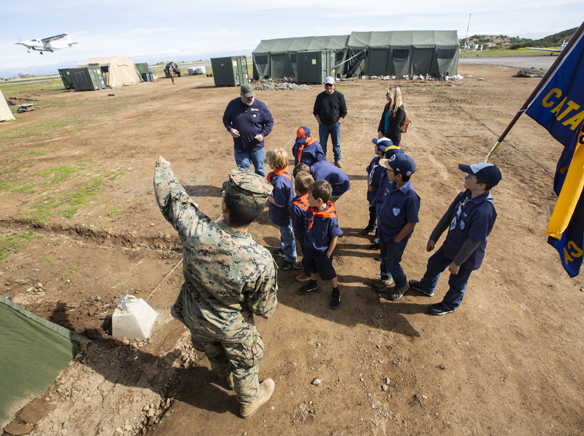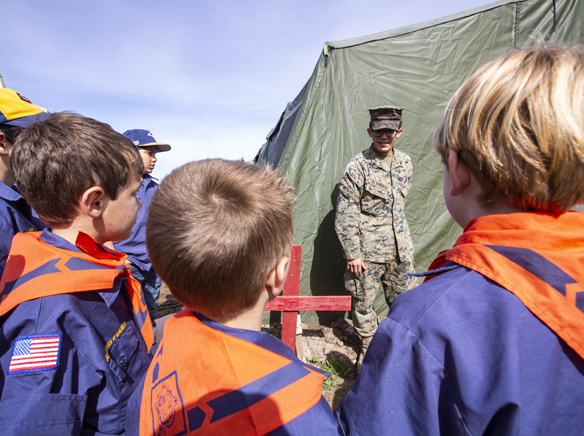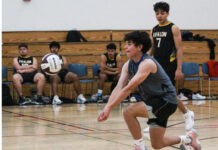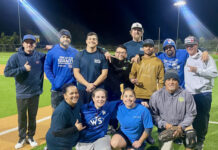Tear open the bag. Lay out all components onto a tray. In addition to the main dish of Asian beef strips, there is a packet of cheese spread, crackers, Skittles … even a pound cake. The plastic bag labeled “heater” stands out. Adding water, the bag begins to heat up. All that’s left is to place the entrée, still safely in its packaging, into the steaming pouch. And then they wait.
Waiting patiently may not be something that first- through fifth-graders are commonly known for, but this demonstration was part of a very uncommon occurrence after all. They sat, captivated in rapt attention. For the Cub Scouts in Avalon Boy Scout Pack 400, it answered one of their most pressing questions of the day: how and what do the Marines currently working up at Catalina’s Airport in the Sky eat?
A group of nine Cub Scouts from Avalon traveled to the Airport in the Sky to spend time with the Marines working to repair the ACE Clearwater Airfield. Approximately 100 Marines and Navy Seabees have been on Catalina since January as part of an Innovative Readiness Training (IRT) project to repair the aging runway while providing a training opportunity for the military. Visitors are still able to reach the airport; however, not many have the unique opportunity to visit the encampment and learn from the Marines.
The level of interaction and interest the kids showed surprised USMC Corporal Dylan C. Alvarado, a former Cub Scout, who helped field questions and show the scouts around.
“I didn’t think they would be this excited to see what the life of a Marine is,” he said. “The fact that you have a captivated audience puts a smile on your face and makes you want to show them more.”
The scouts toured the site, including the tents that serve as the Marines’ living quarters during their more than three-month deployment to Catalina, and were introduced to the equipment and machinery used to repair the runway including rebar and concrete. Troop Leader Mark Hottendorf passed a piece of cut rebar among the scouts to demonstrate the weight of the material.
“It fills my heart with joy just to watch these kids and see their minds work,” said Hottendorf. “As an adult, we have a different focus, so some of the questions from these kids are things you don’t even think to ask.”
In addition to demonstrating exactly how an MRE (Meal Ready-to-Eat) works, Corporal Alvarado fielded a variety of questions from the Cub Scouts. The heater pouch demonstration led to a teachable moment about the importance of not starting fires in the field. The scouts were also asking questions about the living standards, what pieces of Marine uniforms meant, and general knowledge about what the Marine Corps is, what Marines do, and why they’re on Catalina.
“They thought we were just building a runway, but really it’s far beyond that,” said Corporal Alvarado. “We’re not just supposed to be ‘very good’ at being an expeditionary force and creating whatever is asked of us, whether that’s a runway or something else. We’re not supposed to be ‘very good,’ we’re supposed to be the best. Every day we’re training to stay the best, and it was great to show these kids how much hard work, time and sweat we put into this runway and into everything we do.”
“It was a cool day to be a Cub Scout,” he added.












